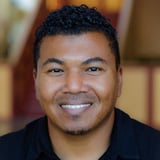Summary
Senseless acts of violence change lives forever. For the victims and their families, life will never be the same. But wounds, particularly those inflicted by racism and hatred, injure entire communities; and communities must find a way to move on. Civic design, practiced at a community level and led by leaders from inside, offers a generative approach to restoring agency, purpose and power. It has the potential to rekindle hope and trust, and to reclaim power, despite those who tried to take it away. This session illustrates how civic design is being used to heal an injured community.
Key Insights
-
•
Buffalo ranks as the fourth most segregated city in the US, with 85% of its Black population concentrated on the East Side.
-
•
Highway 33 physically divided Buffalo’s East Side neighborhood, reinforcing segregation and limiting access.
-
•
Redlining, a discriminatory banking practice thought to be historical, was still legally challenged in Buffalo as recently as 2015.
-
•
Gun violence and race-related mass shootings have been increasing nationally, creating a dangerous environment for cities like Buffalo.
-
•
The 2022 Tops Plaza shooting was racially motivated, targeting Buffalo's Black community based on demographic data.
-
•
Immediate community needs after tragedy included food access, mental health support, and culturally appropriate resources.
-
•
Multi-sector collaboration involving government, nonprofits, community leaders, and celebrities was vital to Buffalo's healing response.
-
•
Allowing community members time and space to grieve openly was fundamental to developing trust and collective action.
-
•
Long-term healing requires multi-generational, multi-sector civic planning with community empowerment and Indigenous leadership.
-
•
Effective disaster response includes clear leadership roles, transparent donation processes, and mechanisms to sustain momentum beyond initial emergency efforts.
Notable Quotes
"Buffalo is actually designed for incidents like this to happen."
"When you add underinvestment, segregation, and poverty, you have a recipe for disaster."
"Gunshots were a routine sound growing up. We became numb to it."
"The shooter used census data to target the location to inflict the most damage on Black people."
"Tops was more than a grocery store; it was a bank, a pharmacy, and a community meeting place."
"We had to allow people to grieve first before we could make a plan for healing."
"Government cannot be the only solution—we needed community groups, nonprofits, and for-profits all involved."
"Political leaders had to show up and just listen, without campaigning or trying to say anything."
"Momentum is great, but without a disciplined system, things will go back to the way they were."
"Buffalo is the city of good neighbors—people immediately asked how they could help after the tragedy."
Or choose a question:
















More Videos

"I believed we could do more — more for the company, customers, stakeholders, and ourselves if we had more agency."
Nalini KotamrajuResearch After UX
March 25, 2024

"Don't be a pot plant, be a crab."
Dean BroadleyNot Black Enough to be White
January 8, 2024

"I appreciate your allyship when I'm in the room, but I appreciate it more when I'm not in the room."
Denise Jacobs Nancy Douyon Renee Reid Lisa WelchmanInteractive Keynote: Social Change by Design
January 8, 2024

"Our first problem statement was too big, so we refined it to something more doable and actionable."
Kim Fellman CohenMeasuring the Designer Experience
October 23, 2019

"Power is the ability to change another person’s reality."
George AyeThat Quiet Little Voice: When Design and Ethics Collide
November 16, 2022

"Google’s Material Design has echoes of design decisions flowing through many of their applications."
Nathan CurtisBeyond the Toolkit: Spreading a System Across People & Products
June 9, 2016

"If agents do well, we do well. The more we know about you, the more we can make you better or fulfill your goals and aspirations."
Greg PetroffThe Compass Mission
March 10, 2021

"We have this collective superpower navigating the breadth and depth of human experience across cultures."
Chloe Amos-EdkinsA Cultural Approach: Research in the Context of Glocalisation
March 27, 2023

"Agile can feel like a cult, but the data helps show it’s working and not just a belief system."
Mackenzie Cockram Sara Branco Cunha Ian FranklinIntegrating Qualitative and Quantitative Research from Discovery to Live
December 16, 2022

















